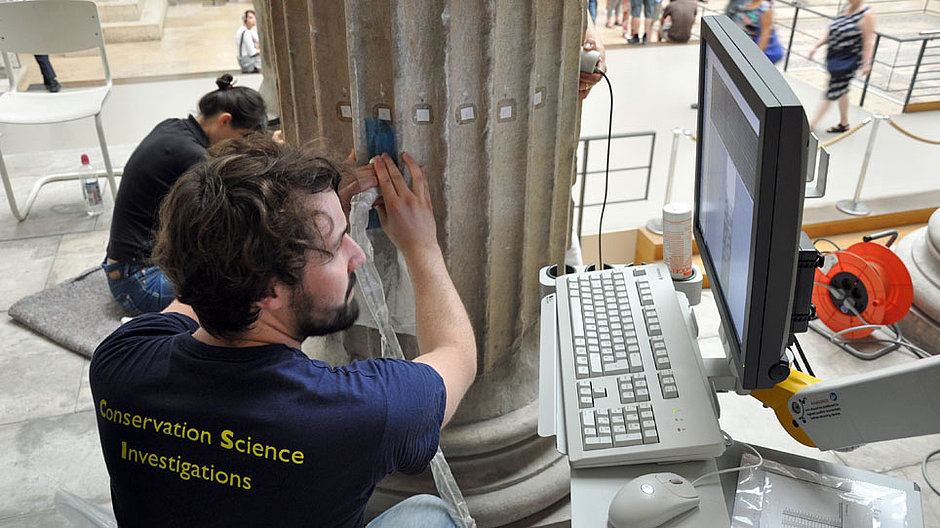Bereichsnavigation
Forschungsallianz Kulturerbe
The Forschungsallianz Kulturerbe develops innovative restoration and conservation methods. It was established in 2008 by the Stiftung Preussischer Kulturbesitz, the Fraunhofer-Gesellschaft, and the Leibniz-Gemeinschaft.
Cultural assets include written documents, paintings, sculptures, everyday objects, sound recordings, historical buildings, and much more. These treasures of art and culture are usually very delicate. They are made from a wide variety of materials and are subject to diverse effects that can damage them. Preserving cultural assets in a lasting way is thus a great challenge. This requires complex approaches to solutions, with the participation of experts not only in conservation and restoration but also in a variety of disciplines, including the natural sciences, engineering, cultural studies, and the humanities.
Since 2014, the Staatliche Kunstsammlungen Dresden (Dresden State Art Collections) and the Staats- und Universitätsbibliothek Dresden (Saxon State and University Library) have also been involved as associate partners. The Forschungsallianz Kulturerbe (Cultural Heritage Research Alliance) studies and develops innovative technologies to preserve cultural assets in a lasting way. It works in an interdisciplinary way and fosters the transfer of knowledge between research and practice. Another goal of the alliance is to advance the education of the next generation of scholars and to build national and international networks in conservation studies. The research alliance has successfully advocated on the political level for the introduction of the study of cultural heritage into the next EU Framework Program: Horizon 2020.
The fields of the research alliance’s work include, among others, the preservation of holdings and preventive conservation, new methods for cleaning and decontaminating, energy-efficient climate-control proposals for museums, collections, and archives as well as developing nondestructive testing methods. Since 2010 the Forschungsallianz Kulturerbe, in collaboration with external partners, has organized the events series “Das grüne Museum” (The Green Museum).
The Stiftung Preussischer Kulturbesitz has strong competence in the area of restoration studies at the Rathgen-Forschungslabor (Rathgen Research Laboratory) of the Staatliche Museen zu Berlin (National Museums in Berlin). It was founded in 1888 as the Chemisches Labor (Chemistry Laboratory) of the Königliche Museen zu Berlin and is the oldest museum laboratory in the world. For a long time, Germany was an international leader in the field of conservation studies. Downsizing and limited funds have created a danger that Germany could lose touch with international developments. That was the motivation for founding the research alliance. It is intended to network the participating institutions better in order to maximize their resources and potential.


